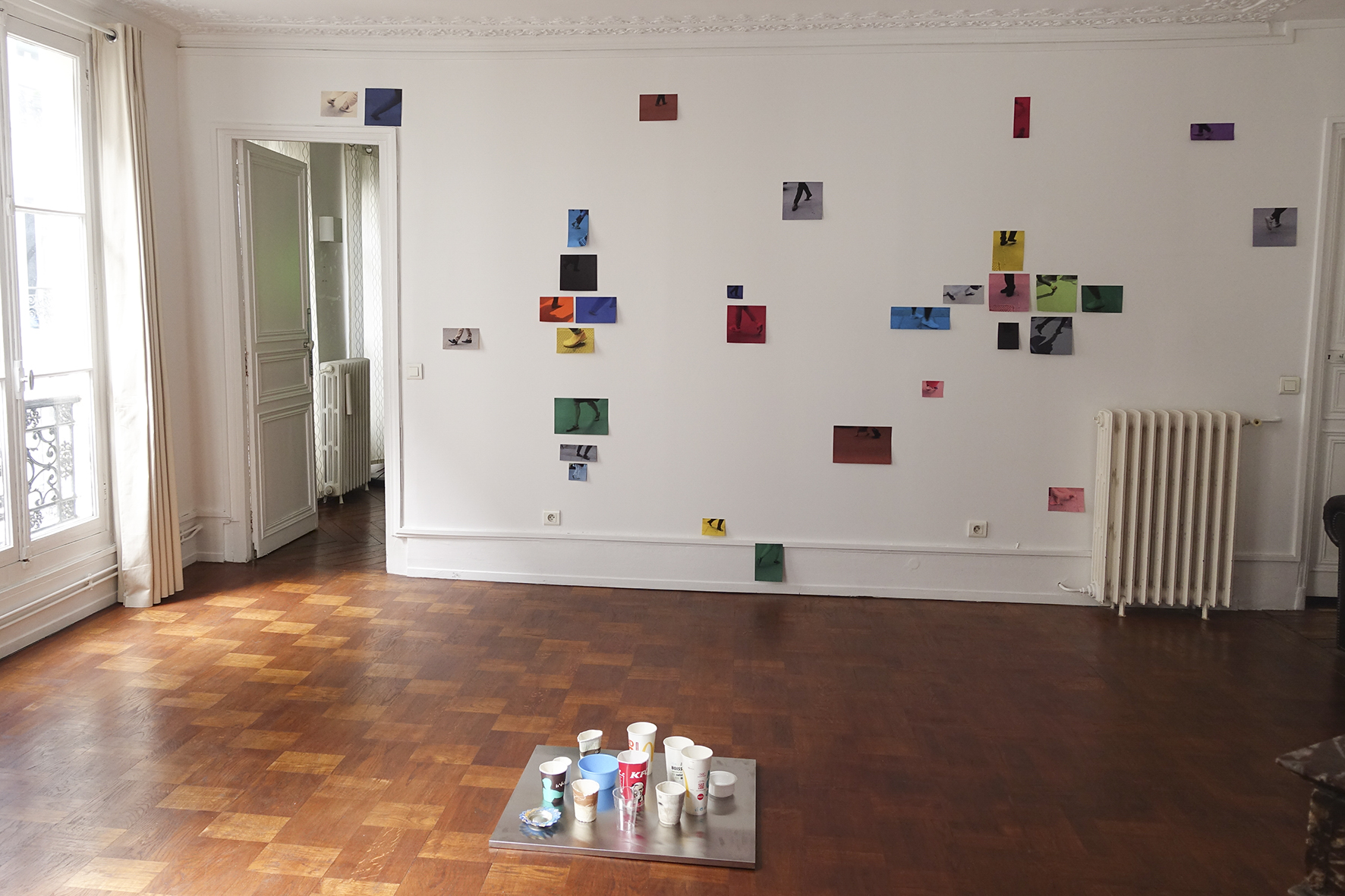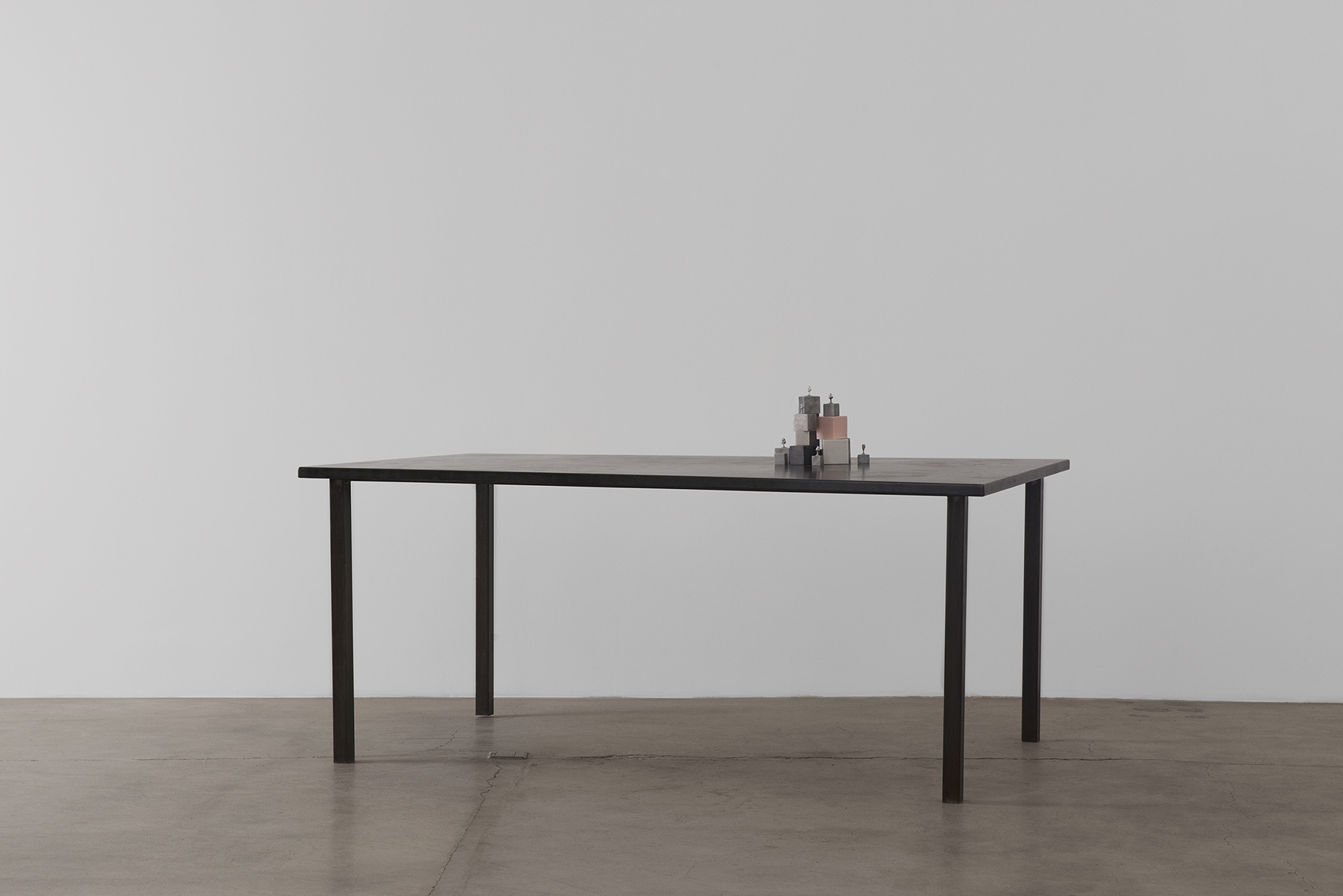Loïc Le Gall
In China, a new generation of artists, often women, are focusingon questions of habitat and architecture, of human being’s placein the often anarchic expansion of urban territory. Nabuqi, who graduated from the Central Academy of Fine Arts in Beijing in 2013, explores these complex relationships between space and body, and perception of space. Based in Beijing, she herself has always lived on the outskirts - she uses the concept of “village-within- urban environment” - and moves further and further out from the centre, as the city gets bigger. Surprise and movement would easily characterise the urbanization of China’s capital city. The surprise and movement are generated by the speed with which the landscape is transformed, and the inhabitants’ capacity for adapting. For example, a neighbourhood can disappear within a few months, purging the inhabitants, who nevertheless have to return thereto work. Nabuqi talks about “many empty shadows left behind”, shadows of both people and constructions left in an in-between state. Although the artist’s work, paradoxically exuding a calm impression, does not directly evoke this urbanization, it nevertheless reproduces the mechanisms of it and feeds on this constant state of agitation. Nabuqi documents these immutable evolutions and her own primary investigations in a diary, a notebook of recordings from life, and a catalogue of forms. The drawings offer keys or clues toan understanding of the three-dimensional practice. As a kind of reflection or respiration, her drawn work enables her to experiment with potential space / body confrontations, or new colours. Indeed, Nabuqi does not hesitate to use gaudy tones, pinks, greens and yellows that cut into the cold, conventional space of the white cube.

In the series, ‘A View beyond Space’, Nabuqi attempts to represent different notions of space within the same sculpture. The first is, of course, the physical space itself, tangible and real, existing because of the elementary human presence. The second is generated by the spirit, a universe of the mind in a non-location that the body cannot experience. The aim of the artist is to enable the viewer to be projected into an environment created by a single piece of message: the sculpture. The lines, forms and surfaces of objects require this need for interpretation, because of the human brain’s capacity for analysis and mental agility. Sometimes, Nabuqi fashions landscapes that recall the skylines of buildings or even the levels of platform video games from the 1980s and 1990s, such as Prince of Persiaor Mario Brosas in No. 16of the series. Some recurrent forms suchas narrow staircases without guardrails are obvious indications of movement and discomfort. The body is constrained in a moment of transit which is not comfortable, yet evokes an escape, a strayingas much as a danger. Elsewhere, the sculptures are arid and demand more effort. In A View Beyond Space No. 8(2015), the details are invisible or absent. Is the hollowed-out structure sufficient in itself or must it be augmented by another reality? That is the question.
More recently, with the installation Floating Narratives(2017) presented at the Centre for Chinese Contemporary Art in Manchester in 2018, Nabuqi studies even more deeply the relationship between the body, the space and the work of art. A collection of artificial plants, lamps, a fan and photographs that are distorted andtherefore difficult to understand “occupy the space”, in the wordsof the artist. With the artificial breeze from the fans and the light generated by electricity, the work transcends its own physical characteristics, it overflows, it floats. The installation therefore suggests an inaccessible and deliberate hidden dimension. Indeed, one can feel the air and one can see an unnatural light: the ethereal.What, then, is the place of the work itself in relation to the space and the body of the viewer? On another level, the artist plays with notions of ‘false’ and ‘true’. The illusion of landscapes represented by a photographic image adds to the fiction of the space, as does the fictional nature of the plastic plants: an effect of Bartesian reality.

In her definition of space and, by extension, of landscape, theartist has eliminated notions of beginning and end. Space stretches out infinitely, without walls or doors. In a way, especially as it relates to the construction of a mental space, the work of Nabuqi has its roots in the works of Absalon (1964-1993) and in another way in those of André Cadere (1934-1978). They both envisagedthe need to inhabit space and escape from a purely physical logic. Sculpture could be a witness or a tool, allowing access to another dimension. The object therefore constitutes its own dimension while engendering an infinite mental field. Nabuqi also questions visual and sensory perception, “When we enter into different types of space, do we perceive the information through visual means or is the body also a receptor of information?” The sculpture is not restricted simply to its visual, physical or spatial characteristics, or even to an ideological or historic context. There is not just one way of looking that produces a result but an infinity of ways, producing a multitude of interpretations. The spectator does not find himself in front of a traditional work of art to be looked at, they are physically involved, becoming in turn a participant and a constituent element of the work. In other words, the works of Nabuqi do not appear to belong to the family of classical or ancient sculpture or to that of Canova but rather to the participatory installations of Bruce Nauman, orthe mirrors of Michelangelo Pistoletto, which engage the visitor by including their own reflections in the work.
During a residency at Dawan Art in Paris in 2017, Nabuqi took upthe theme of ‘Stay andOccupation’. These words, symptomatic of her work, imply that every movement of the body has an influence on the environment. Dynamics between individuals are altered when another person, a newcomer, shares a common space. She then observes the Parisians, recording sounds in the parks, photographing the footsteps of passers-by, and buying from the homeless the vessels they use to collect the money they beg for. Life and survival in the public space, movements and appropriations of areas are at the heart of this cartographic research into a transparent Paris. Nabuqi reveals the indiscernible, sometimes in a conceptual sense - inaccessible dimensions excluding the body, as the constructions are purely mental; sometimes in a political sense - accessible dimensions excluding the body, those of the ‘invisible’, the workers and the homeless.


In 2018, an exhibition at the Shanghart Gallery in Shanghai offers a new understanding of the concept of object in the artist’s work. A series of objects from everyday life were assembled a priori in a simple way, and seemingly arbitrarily. In history of art, we speak of ready-made - an object used for its own quality, and sometimes modified, the most famous example of which is the fountain of Marcel Duchamp, a urinal becoming artwork when it is signed and decontextualized; and collage - the combination of separate elements of all kinds. This new body of work by Nabuqi could be compared with the assemblages of the American artist Haim Steibach who participated in the 1980s in Group Material in New York, in the way in which the context and the status of the object are codified. However, beyond the perception of our own body, Nabuqi then extends her research to an environment that is not fixed and immutable like architecture; she is then interested in decorative objects, objects that are supposed to embellish the space, or at least modify it. Here twisted, having lost an initial function, these objects create an impression of strangeness between impression of déjà vu and immersion. It is obvious that we must refer here to the Freudian notion of Unheimliche, elaborated in 1919. Indeed, for Freud, the uncanny (Das Unheimliche) locates the strangeness inthe ordinary. On the one hand, Nabuqi draws directly on the notion of perception, by titling her exhibition “Do real things happen in moment of rationality?”; On the other hand, she evokes a term that is not normally associated with art: the rationality. Here we must see an attempt to interpret a broader philosophical concept and the definition of reality beforehand.
Nabuqi’s sculptures have always found a basis in what the art critic Nicolas Bourriaud has called relational aesthetics, that is, art that takes the sphere of human relationships as a theoretical or practical point of departure. Nevertheless, more recently, the networks created between “work” and“spectator”have more distended links, andthe nature of the works is based on a more precise reality however full of doubts. And for good reason, Nabuqi’s major series of work in 2018 is entitled The Doubtful. If the artist’s previous sculptures were resolutely abstract, this new chapter is more tangible, usinga category of forms less confusing for the viewer. The vocabulary she uses takes up elements of the urban and the space, and defines another relation of the occupation of the body in space. In The doubtful site (engulfing and radiating shapes), the form recalls one of the Greek theater, which had a very precise function: the place of representation. This is precisely what interests Nabuqi here, how to see and be seen, and what political notions (in the Greek sense of the term; that is, what is related to the organization and the exercise of power in an organized society) are exercised? We understand that through her sculptures, Nabuqi is part of a history of the art of the object and its perception but also that she questions very current issues around the concept of collective and space appropriation.
A shorter version of the article was published previously in the journal CURA. 28in 2018 under the title Inhabiting Space by Nabuqi.